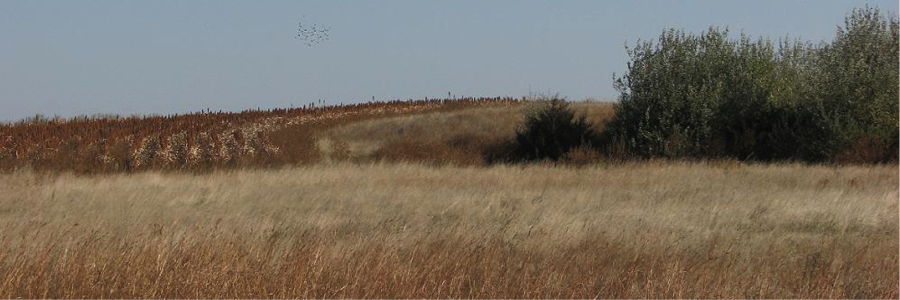Farming, ranching, hunting, and wildlife management go hand-in-hand at Daybreak Ranch in central South Dakota. Located north of Highmore, family-owned and operated Daybreak Ranch comprises 8,000 acres of private land consisting of native grassland, cropland, wetlands, food plots, and tree belt plantings. These diverse habitats support wildlife in abundance, especially ring-necked pheasants, white-tailed deer, pronghorn, ducks, sharp-tailed grouse, and prairie chickens. A number of these species provide exciting and productive hunting opportunities for hunters from across the country.
Prior to the bleak drought years of the 1970’s, Daybreak Ranch’s owner, Jim Faulstich, believed, “it was a waste if you didn’t harvest everything out there, and we never managed for wildlife. If you saw just one pheasant back then, it was like a Christmas present.” However, after needing to sell most of his cattle due to lack of hay to harvest and feed them, he decided to diversify his farming and ranching operations to support game species and other wildlife.
Jim and his family transformed the ranch through a variety of projects. They planted trees, fruit-bearing shrubs, and native warm season grasses such as switchgrass, big bluestem, and Indian grass. Over 500 acres of grassland have been established into CRP or other wildlife friendly plantings. Daybreak Ranch has been recognized as a premier grassland management ranch in South Dakota. Range management students visit the ranch to experience and study the components and impacts of quality grassland management.
Other projects used to restore habitat included removing some land from mechanical and livestock disturbance and grazed areas were put on rotation. Farming practices were changed to protect the soil and be more cost effective. Specifically, Jim adopted no-till farming of corn, wheat, sunflowers and other crops to benefit wildlife and protect water quality. Some corn is left on the stalk over the winter to provide feed for wildlife
“Our whole management scheme is now with wildlife in mind,” says Faulstich. “We know if we do a good job grazing cows, it’s good for the cows and it’s also good for wildlife and water quality. And when we plant shelterbelts, we know we’re also creating calving areas that are protected from spring storms and shelter for a variety of wildlife. It’s a win-win situation. I look at it this way,” says Faulstich, “Everybody has a calling. Ours is taking care of the land. Our mission is to leave it in better condition than when we received it.”
Daybreak Ranch has received several awards, including winning the prestigious National Cattlemen’s Beef Association Environmental Stewardship Award for region 7. This award is administered by the National Cattlemen’s Foundation and National Cattlemen’s Beef Association and supported by Dow AgroSciences and the USDA Natural Resources Conservation Service.

